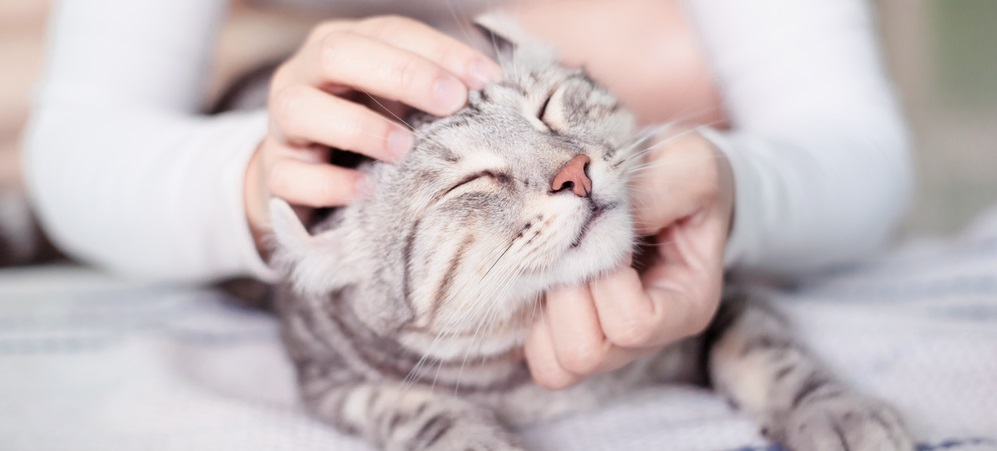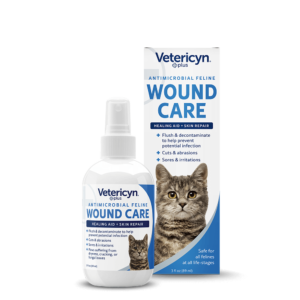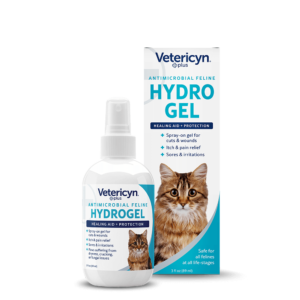Updated April 14, 2025
Cats are amazing little creatures, jumping several feet in the air to catch birds and bugs, sprinting after critters in the yard, and always landing on their feet. Though they rule the house with their superpowers, cats can still get hurt and sick.
Indoor and outdoor cats may experience bumps, bruises, and scratches. Even the most fearsome feline warrior won’t win every battle, and a scratch contaminated with bacteria can become a painful, smelly problem.
Read on to learn more about what causes an abscess and how to treat a cat abscess at home.
What is a Cat Abscess and How Do They Occur?
An abscess is a pocket of tissue filled with pus.
Indoor cats may develop abscesses, but it’s essentially a rite of passage for outdoor cats. Even spayed or neutered outdoor cats will fight for their territory. That means run-ins with possums, raccoons, feral cats, and other animals, as well as the bacteria and viruses they carry. Sticks, fence posts, thorns, and other outdoor hazards can harm your kitty, too.
Ensure your indoor and outdoor cats are fully vaccinated, including the rabies vaccine, and are tested for Feline Leukemia Virus and Feline Immunodeficiency Virus, as these diseases can be transmitted through bite wounds.1

Tiny Wounds Become Big Problems
An abscess forms when a cat’s wound heals too quickly, trapping bacteria inside.1 The infection worsens, pus develops inside, and a painful abscess forms, which may become visible. Sometimes, abscesses aren’t easy to see, but you’ll notice a painful area or a foul smell, along with white to red discharge if it ruptures. Cats with an abscess may have other symptoms such as fever, loss of appetite, and decreased activity.
If you suspect your cat has an abscess, notify your veterinarian immediately.
How to Spot an Abscess
Abscesses commonly occur after catfights, starting from wounds, usually on the head, forelimbs, or at the base of the tail.1 Abscess symptoms include:
- Bad odor
- Discolored discharge
- Hair loss
- Fever
- Lethargy
- Limping (an abscess on or near a limb)
- Not eating (an abscess from a tooth can cause decreased appetite)
- Obsessive self-grooming of one area
- Open sore
- Pain, especially in a specific location
- Swelling
Any combination of these symptoms can point to an abscess. Schedule an appointment with your vet to determine the cause of your cat’s symptoms.
The Battle Plan at the Vet
See your veterinarian for an abscess, whether it has ruptured or not. Do not attempt to squeeze or rupture the abscess on your own. This is painful for your cat and could expose you to pathogens. Instead, see your veterinarian.
If the abscess has not ruptured on its own, your vet will open and flush it. If it’s too painful or an extensive abscess, your veterinarian may sedate or anesthetize your cat to treat it.
For large abscesses or severe infections, a surgical drain may be placed for several days to promote discharge and facilitate healing.1
Zap the Pus at Home
Your veterinarian will provide you with instructions for treating a cat abscess at home, including the use of antibiotics, pain medication, proper drain care (if one has been placed), and wound cleaning.
Follow the steps provided by your vet and treat the area carefully to keep your cat comfortable.
Warm Compress
To create a warm compress, soak a clean towel in warm water and gently hold it against the abscess for 5 to 10 minutes, several times a day, to promote drainage.1
Wash
The skincare wash you choose to bathe your cat should keep the area clean and moist and be non-toxic, phenol-free, and veterinarian-recommended. It shouldn’t sting or burn the damaged tissues or harm healthy skin.
Vetericyn’s pet wound spray cleans the affected area without stinging. It also helps relieve pain on contact, prevents infection, and protects the wound. Never use hydrogen peroxide or rubbing alcohol on an abscess, as these can cause further tissue damage and stinging to your pet.
Wipe and spray the area multiple times a day while waiting for your veterinary appointment and afterwards, and keep it on hand for future problems.

Abscess Healing Timeline
Most abscesses will heal within five to seven days with proper treatment. An abscess with a drain will take a few days longer to heal. If the abscess requires surgery, tissues need about two weeks to heal. After that, stitches will be removed.
If your cat’s not healing normally, call your veterinarian. Recurring infections may be a sign of viruses such as feline immunodeficiency virus (FIV) and feline leukemia virus (FeLV). These illnesses suppress the immune system, making it harder for the body to fight infections and heal wounds.
Happy, Healthy Cats
Cat abscesses can occur in almost every outdoor cat and occasionally in indoor cats as well. But you’re their secret weapon, armed with the knowledge and tools to care for their battle wounds and mishaps. Vetericyn Plus Antimicrobial Wound and Skin Care spray is a safe, effective tool at your fingertips. Coordinate care with your veterinarian and follow these tips to have your cat prowling again.
Discover how our animal wellness products can enhance the quality of life for all your animal companions at Vetericyn.com.
 Reviewed by Dr. Kathy Adamson
Reviewed by Dr. Kathy Adamson
Dr. Kathy Adamson earned her bachelor’s degree from the University of Notre Dame and her Doctor of Veterinary Medicine degree from the University of Wisconsin-Madison School of Veterinary Medicine.
She completed a one-year small animal medicine and surgery internship at the North Carolina State College of Veterinary Medicine. Alongside her studies, Kathy worked in a research lab, contributing as an author and co-author to various journal articles.
She has also pursued medical writing and editing certification through the University of Chicago Graham School. Currently, she runs KMA Veterinary & Medical Writing, a freelance medical writing company, serves as the Digital Content Manager for the Greater Chicago Area Chapter of the American Medical Writers Association, is a member of the AMWA Communications Committee, and enjoys writing about healthcare topics for people and their cherished pets.
![]() https://www.linkedin.com/in/kathyadamsondvm/
https://www.linkedin.com/in/kathyadamsondvm/
Sources:
1. Brooks W. Abscesses in Cats from Bite Wounds. VIN.com. Published online August 8, 2017. Accessed March 25, 2025. https://www.vin.com/doc/?id=8156779

